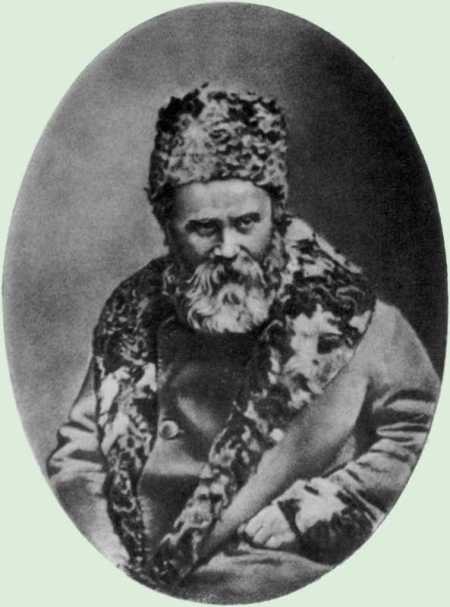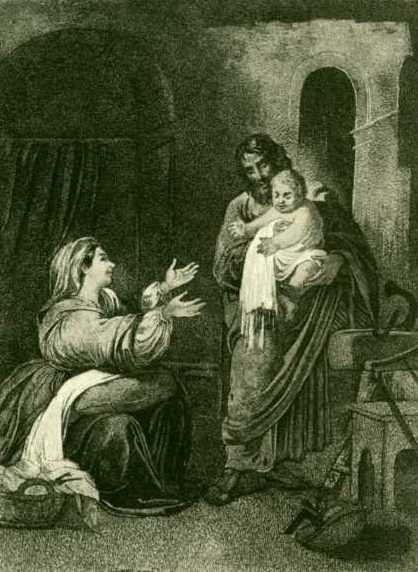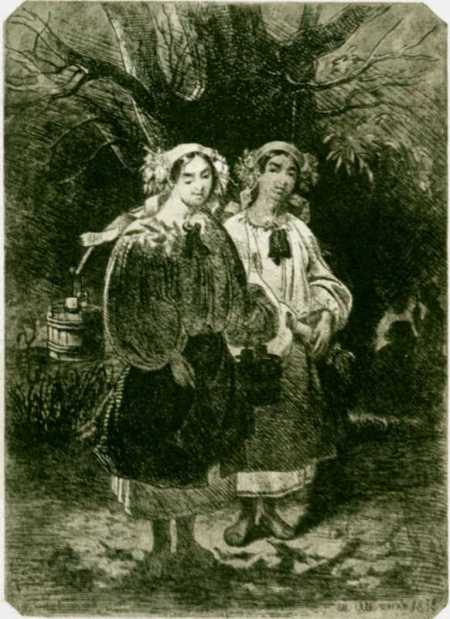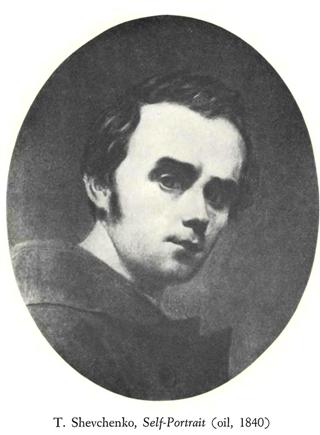|
TARAS SHEVCHENKO’S LIFE AND WORK
(part of the biography written by C. H. Andrusyshen)
Taras Shevchenko. Photo, March 30, 1858.
On the way to St. Petersburg, an inflammation of the eye, which caused painful boils to appear on his head, forced him to stop in Moscow in order to be treated by physicians. Among other friends who came to visit him there, he met Princess Repnin, a life-long friend who had done her utmost to have him freed from exile. The meeting, warm enough though it was, left much to be desired. The impression she received from an ailing, decrepit man who had aged prematurely was painful, and it appeared to her that he was in a decline both physically and spiritually. He, on the other hand, detected in her traces of religious bigotry that were not to his liking. The friendship was preserved, but their feelings towards each other were somewhat cooled. Having returned to St. Petersburg, his first visits were to his closest friends, M. Lazarevsky and the Tolstoys, who were more instrumental than anyone else in helping him regain his freedom. His arrival at the Russian capital was a social event of the first order, and he was wined, dined, and lionized even to surfeit. In addition, he plunged himself into the cultural and artistic life of that imperial city with as much gusto as if he wanted to make up in a few days for the lack of it he had experienced for ten years. After a carefree period of several weeks, which occasionally presented the appearance of a carousal, he settled down somewhat in order to plan his future. In the first place, he set about collecting all his poems, many of which were still in manuscripts scattered among his friends, in order to publish them collectively. Simultaneously he began to study in the Academy new methods of engraving as a means of gaining his livelihood, for now, as a result of high living, he began to feel the pinch which could not be alleviated by sporadic sales of works done somewhat half-heartedly and indifferently. Social and economic conditions in Ukraine, as well as those of other peoples comprising the Russian Empire, continued to trouble him, particularly the sorry status of the serfs for whose emancipation he longed and prayed. These matters were widely discussed in the circles in which Shevchenko moved, but it only unnerved him to have to listen to a mere multiplication of empty words that bore no seed of action. In his irritation, rendered the more acute by the ten- year exile, he finally arrived at the conclusion that the only way to effect an amelioration in that respect was by means of an armed revolution. This radical attitude he could by no means conceal, a fact which made his efforts to publish the entire collection of his verse the more difficult with the censorship.
Taras Shevchenko. Saint family. 1858. St. Petersburg
After three months of boisterous living, Shevchenko, persuaded by Count Tolstoy, settled down to a more serious life at the Academy of Art where he was given simple living and working quarters, each on a separate floor. There he began his studies in engraving with a view to gaining the rank of academician which would enable him to acquire prestige and eventually the opportunity to teach at the Academy. Orders began to increase, and his material resources improved considerably. His circle of friends likewise began to widen among Ukrainian, Russian, and Polish literati, scholars, and artists, and he was welcomed warmly in all the important literary salons of St. Petersburg, some of which were frequented by I. Turgenev, N. Chernishevsky, N. Leskov, and others of higher magnitude. Especially pleasing to Shevchenko was his friendship with Ira Aldridge, a negro actor, then performing in St. Petersburg in Shakespearean tragic roles, particularly in Othello and King Lear which inspired Shevchenko to the point of tears. Their conversation, of course, was conducted through interpreters and by mimicry, rendered the more animated when there was a bottle to share between them; and the link uniting them became firmer as the two former bondmen related to each other their past experiences and alternately sang the songs of their people. The high light of this significant friendship was the portrait which Shevchenko drew of Aldridge, with which both were well pleased. Now that he had established himself in the Academy, Shevchenko intensified his artistic and literary work. Nothing more, it seemed, could have been desired if his sensitivity and concern for Ukraine, her present state and future destiny, had been less keen at the sight of the wrongs done her by her Russian overlords. He conceived a strong desire to visit his native country again, this time with an added purpose — to get married and raise a family. While waiting for the permission to leave St. Petersburg (he was still under police surveillance), he wrote to several of his relatives and friends to seek out a bride for him.
Taras Shevchenko. Two girls. 1858. St. Petersburg.
Introduction written by Professor C.H. Andrusyshen
Read more: Recent comments for the page
«Taras Shevchenko in St. Petersburg (1858 - 1859) - part of Taras Shevchenko biography by Constantine Henry Andrusyshen»:
Refresh comments list
Total amount of comments: 0 + Leave a comment
|
|



